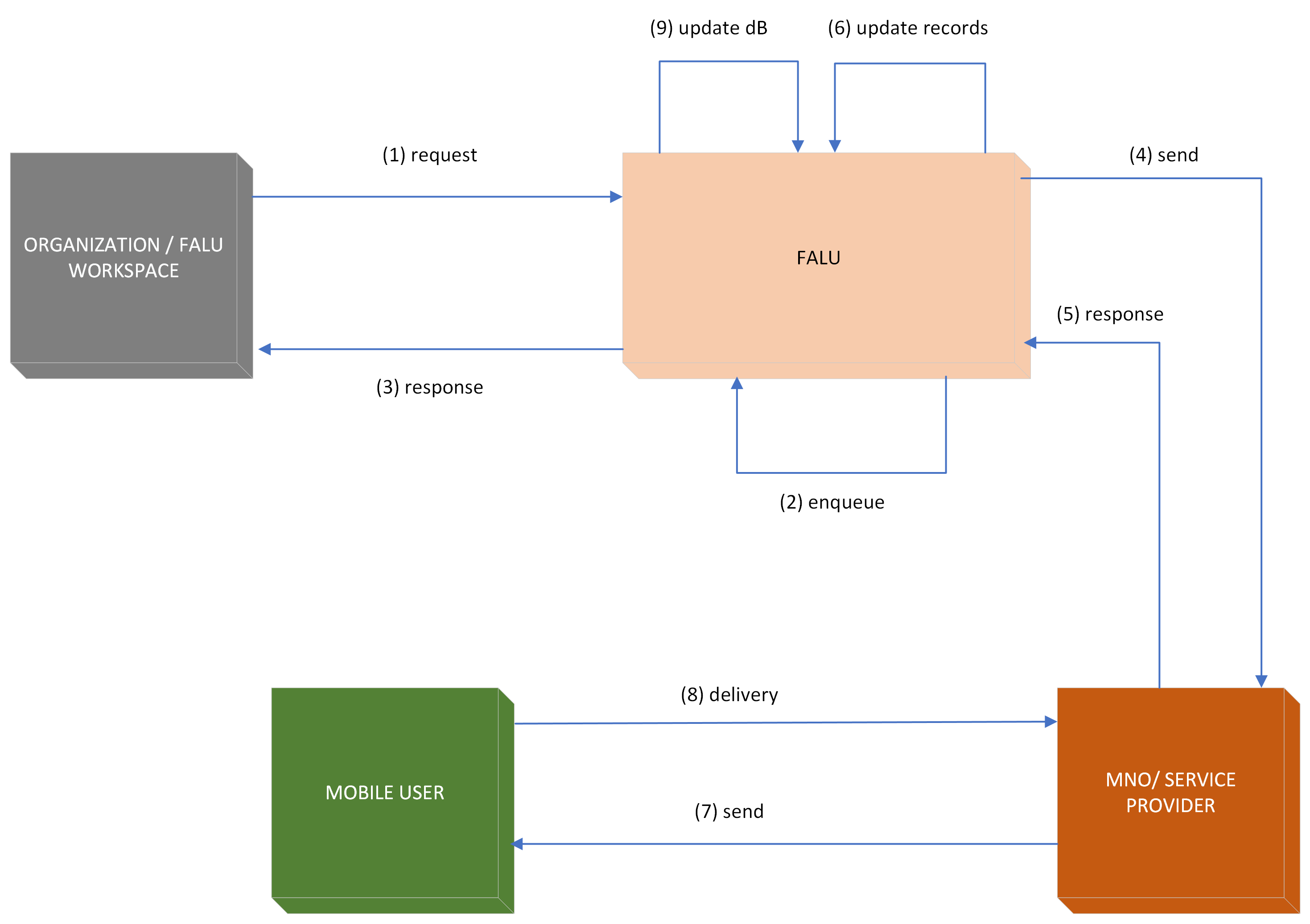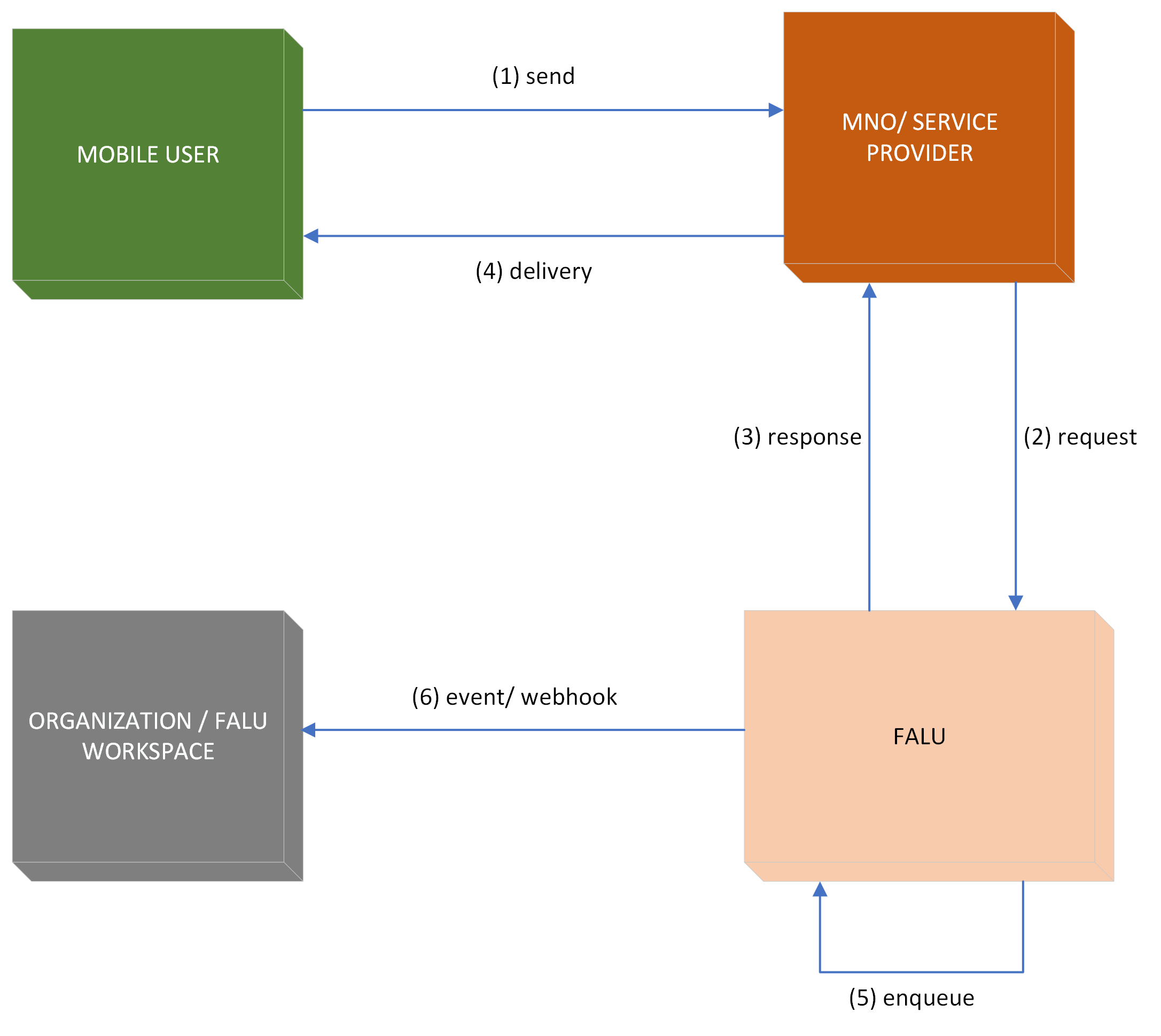Supported message types
Learn about the types of messages you can send using Falu Messaging
Falu Messaging supports three message types: Marketing, Transactional, and Inbound.
Marketing and transactional messages, while different, utilize a similar architecture to achieve different communication goals. For instance, you can send seasonal campaign notifications as marketing messages, while transactional messages are best suited for targeted communications such as sending one-time passwords.
Inbound messages, on the other hand, utilize a different architecture and enable businesses to engage in two-way communications. They are ideal for driving conversations in situations that require personalized customer interactions at scale such as in contact centers.
Marketing and transactional messages
These are one-way messages sent by a business to its customers, with no response expected from the customer.
While the architecture and information flow used to send the two types of messages are almost alike, they are, however, very fundamentally dissimilar: Marketing messages are sent to multiple recipients, whereas transactional ones are targeted at a specific person. Additionally, marketing messages are sent through a marketing stream, while transactional messages use a transactional stream.
Message streams allow Falu to group and route messages optimally, thus achieving high deliverability and time-to-inbox.

As shown above, marketing and transactional messages are triggered through a Falu-authorized workspace and follow a nine-step process to reach the recipient successfully:
- The organization sends a request typically of the form To, Stream, Body/ Template, Media, Schedule, Customer to Falu.
- Falu queues this message depending on the message stream specified in the request to avoid delays.
- A response is sent back to the customer stating, for instance, whether the message (s) can be sent.
- Falu routes the message(s) to the appropriate mobile network operator (MNO)/ service provider.
- The MNO sends a response back to Falu on whether the message(s) can be sent to the recipient(s).
- Internally, Falu updates its database and generates an event of the type message.sent that can be consumed by the organization's application.
- The MNO sends the message(s) to the recipient(s).
- Upon receipt of the message(s) by the recipient(s), the MNO receives a delivery notification.
- Internally, Falu updates its database and generates an event of the type message.delivered that can be consumed by the organization's application.
Falu Messaging maintains a message queue for each workspace to ensure that the rate at which SMS messages are sent does not exceed operator or regulatory throughput limits.
Inbound messages
Inbound messages are sent from a customer to a business registered to use Falu Messaging.
Similar to the transactional and marketing message types, inbound messages are sent from Falu to an organization's workspace through a message stream, specifically the inbound stream.

As shown above, receiving an inbound message follows a six-step process:
- A mobile user initiates a session by sending a message to a particular organization.
- The MNO used by Falu to route messages receives this message and sends a request to Falu to process the communication.
- Falu sends a response to the MNO detailing, for example, that the message can be sent to the target organization.
- The MNO sends a delivery notification to the customer that the message has been sent to the organization.
- Internally, Falu queues the message to meet the MNO’s response time deadlines.
- Falu generates an event of the type message.received that can be consumed by the organization’s web application.